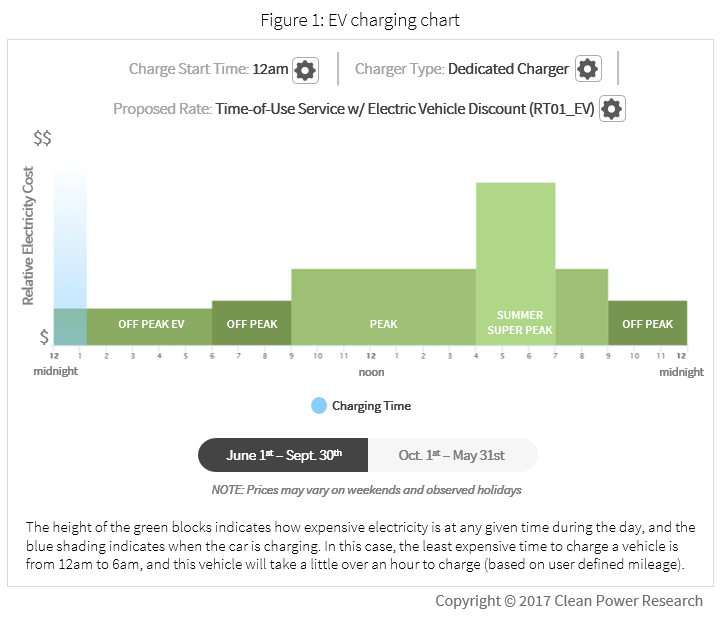Electric vehicle (EV) adoption is increasing, and utilities are taking notice. In a May 25, 2017 webinar, “Shifting Utility EV Strategy into Drive: Best Practices and Lessons Learned1,” Thor Hinkley, EV senior program consultant at CLEAResult, pointed out that nearly every major automotive manufacturer now makes, or has plans to make, a plug-in electric vehicle. As EV ranges increase, and prices decrease, EVs are becoming attractive to a larger number of new car buyers. As a result, estimates for EV adoption have been increasing over the past few years.
Why does this matter to utilities? A customer that has purchased an EV suddenly changes not only how much energy they use in a month, but also when they use it. With enough EV adopters in the same community, utilities will experience changes in their overall load profiles. Utilities need to plan for those changes, and smart utilities will figure out how to use electric vehicles to their advantage.
Why is SMUD taking such an active role in supporting electric vehicles?
As a community-owned utility, the Sacramento Municipal Utility District (SMUD) sees EVs as a great opportunity, and has been proactive about educating and incentivizing EVs in their service area. During the same webinar, John Grindrod, program manager in Customer Solutions at SMUD, explained that there are three main reasons SMUD is so interested in supporting electric vehicles:
- Adoption of EVs improves local air quality because EVs have zero tailpipe emissions.
- EVs generate fewer greenhouse gas emissions overall as compared to similar gasoline powered vehicles.
- EVs generate revenue for SMUD.
To support EV adoption, SMUD is focusing on educating their customers while also experimenting with pilot programs, such as installing a charging network within their service territory.
What do SMUD’s programs look like?
To educate their customers, SMUD has started Ride and Drive programs in their community, and offers WattPlan®, a self-service online educational tool, to all their customers. During the webinar, Brian Boler, lead project manager at Clean Power Research, explained that many customers are still uncomfortable with the thought of driving an EV, and they are looking for guidance. Common questions are:
- What will my total energy costs be?
- What incentives are available?
- How will an EV impact my carbon footprint?
- What is my range limit?
- Where can I charge away from home?
- What’s the best electric rate plan for me?
- What’s the best time to charge at home?
- What’s my long-term financial impact?
WattPlan addresses all of these questions, and provides an interactive and personalized estimate for each customer to help them understand the costs and benefits of driving an electric vehicle.
The information provided by WattPlan not only helps customers feel more comfortable replacing their conventional vehicle with an EV, it also allows SMUD to educate customers on the optimal electric rate plan for their situation, and the best time to charge their EV at home.
As shown in Figure 1, WattPlan clearly shows the least expensive time to charge an EV, and how long the vehicle will take to charge based on driving behavior and the type of charger. By educating customers that the most cost-effective time to charge their EVs is at night, SMUD can help alleviate adding to day-time peak loads.

In addition to their customer education programs, SMUD is also installing both Level 2 and DC fast chargers throughout their territory. Although more expensive, SMUD believes that installing fast chargers decreases range anxiety for their customers, and opens-up the possibility of EV ownership for customers who live in apartments and do not currently have the option of home charging.
Will other utilities follow SMUD’s lead?
Polls throughout the webinar showed that most participants have thought about starting EV pilot programs at their utility, but don’t have plans to launch a program this year. During the webinar, Lin-Zhuang Khoo, senior vice president of Strategy at Greenlots, advised utilities to start with small pilot programs, prioritize disadvantaged communities and protect customer choice by offering multiple participation options.
With the growth of EVs, it’s likely that all utilities will need to address EVs eventually, as they’ll be providing the power to charge the vehicle batteries. Although EV technology still seems new to many utilities, SMUD is showing that taking a proactive approach is key to maximizing the benefits to the utility and the grid that it manages.
Learn more
Often customers purchasing an EV have the option to switch to an EV-specific electric rate plan. This is one of four scenarios where personalized information can help utility customers understand their electric rate options, which helps drive program participation. Learn more in this infographic.
1 On May 25th, 2017, the Association of Energy Services Professionals (AESP) held a webinar for electric utility professionals called “Shifting Utility EV Strategy into Drive: Best Practices and Lessons Learned.” Representatives from utilities across the U.S. attended the webinar to understand more about EVs, and to learn about successful programs implemented by the Sacramento Municipal Utility District (SMUD).

